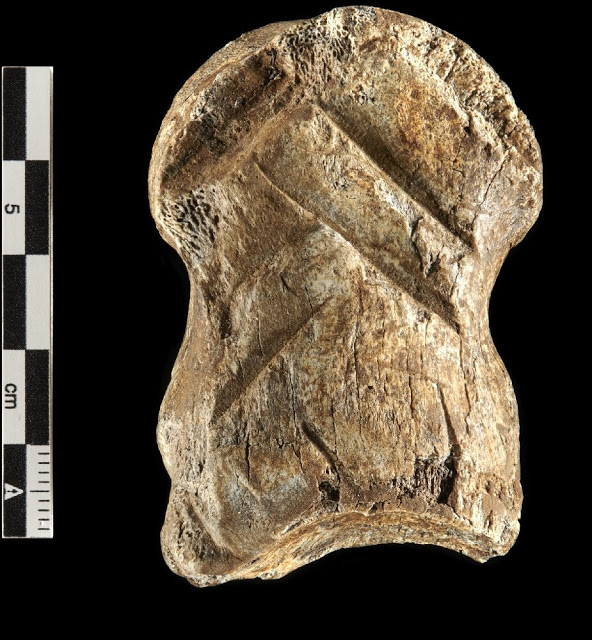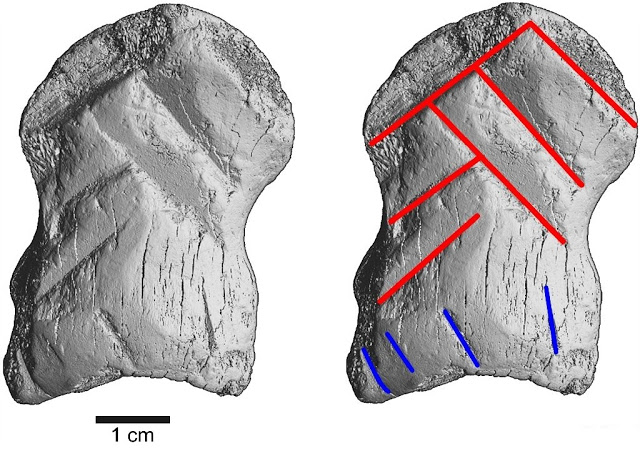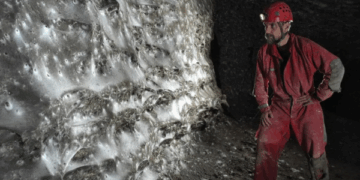Researchers stated Monday that a chevron pattern engraved onto a deer bone more than 50,000 years ago indicates that Neanderthals had their own creative heritage before modern people arrived on the scene.
According to academics, the etching, which was discovered in a German cave where Neanderthals lived tens of thousands of years ago, has no clear value but gives fresh information on the ill-fated species’ aptitude for creativity.

The study concludes that “the cultural impact of H. sapiens as the only explanatory element for abstract cultural representations in Neanderthals cannot be upheld.”
The bone certainly reflects a form of expression, according to Dirk Leder, one of the authors and a researcher at the Lower Saxony Office for Heritage Department of Archaeology.
He stated, “We are quite sure that transmits a concept, a tale, something valuable to a community.”
‘It’s of no practical value,’ says the author.
YOU MAY ALSO LIKE: Africa’s oldest known human burial is a 78,000-year-old grave of a youngster.
Einhornhoehle, or “Unicorn Cave,” is a well-known archaeological site where the carved fossil was discovered.
Treasure hunters looked for unicorn fossils in the central German Alps as early as the Middle Ages.
Scientists initially uncovered evidence of an Ice Age Neanderthal encampment at Einhornhoehle in the 1980s, and the latest bone comes from an excavation beneath a collapsed cave entrance where items were unearthed in 2017.
The bone is roughly half the size of a deck of playing cards (5.5 centimetres long, 4 centimetres broad) and three centimetres thick, and it came from the foot of a rare extinct gigantic deer.
Six diagonal crossing lines cut into it produce a chevron pattern that spans a large portion of one surface.
The investigation concludes, “The item is of no practical utility.”
“Rather, the geometric pattern serves as the focal element.”
According to the study, a series of studies using cow bones to re-create the artefact revealed that it was likely cooked once or twice before being molded with flint.
The research concludes that “the intricate manufacturing process leading to the formation of the incisions, their systematic organization, and the scarcity of huge deer north of the Alps support the concept of a deliberate act and symbolic meaning.”
Meaningful
Flint fragments, bedrock, and teeth purposely etched with cross-hatch or zig-zag lines are among the finds attributable to Neanderthals from the same time period, according to the researchers.
The deer bone, on the other hand, is described as “one of the most elaborate cultural manifestations in Neanderthals discovered thus far.”

According to Leder, unlike Homo sapiens’ art, the different marked artefacts attributed to Neanderthals are not truly comparable, maybe because their populations lived in smaller, more dispersed clusters.
“It appears to corroborate the hypothesis that the meaning of the symbols within the populace conversing with these items was not conveyed to the following generation or simply went away,” he added.
YOU MAY ALSO LIKE: Africa’s oldest known human burial is a 78,000-year-old grave of a youngster.
However, because the latest discovery predates Homo sapiens, Neanderthals may have left a longer lasting imprint.
“It was always the belief that the giant Homo sapiens was passing on intellectual thoughts to other species,” Leder explained.
“A few studies have been pushing the concept that it may have been the other way around in the last several years,” he added.
In June, scientists discovered a skull of a large-brained guy that had been preserved almost flawlessly for more than 140,000 years, which might profoundly alter our view of human evolution.
The “Dragon Man” discovery in northern China suggests a new species of ancient humans who are more closely linked to us than Neanderthals.





















